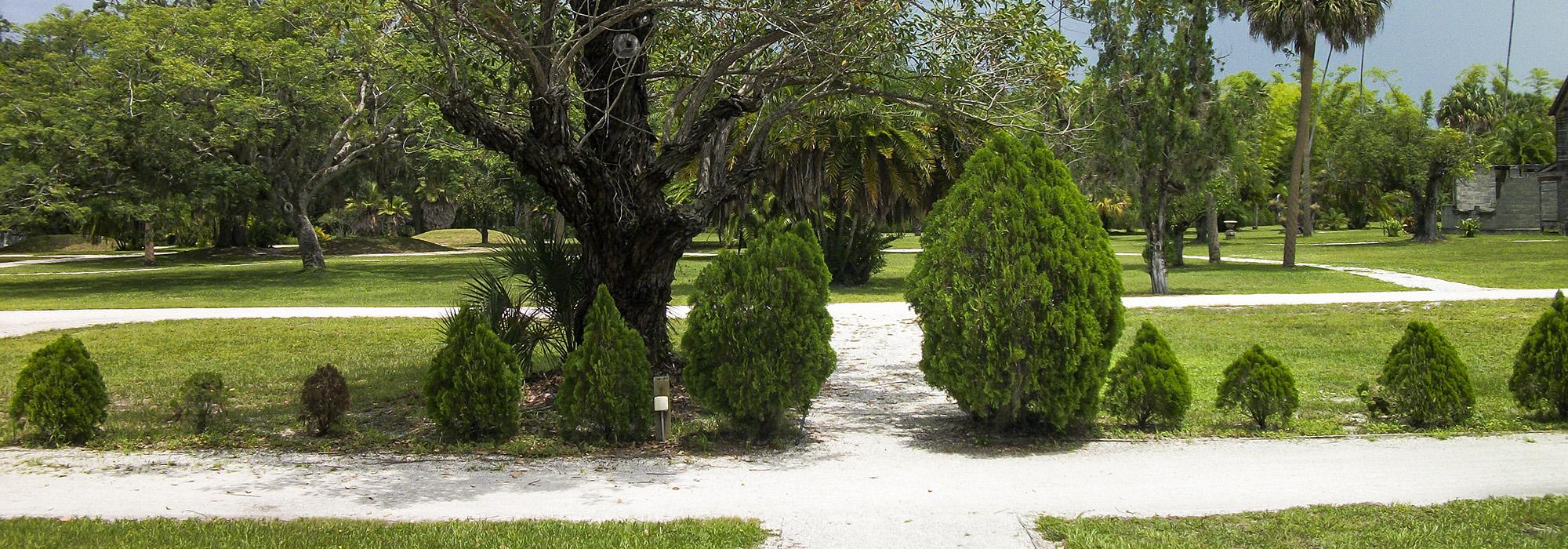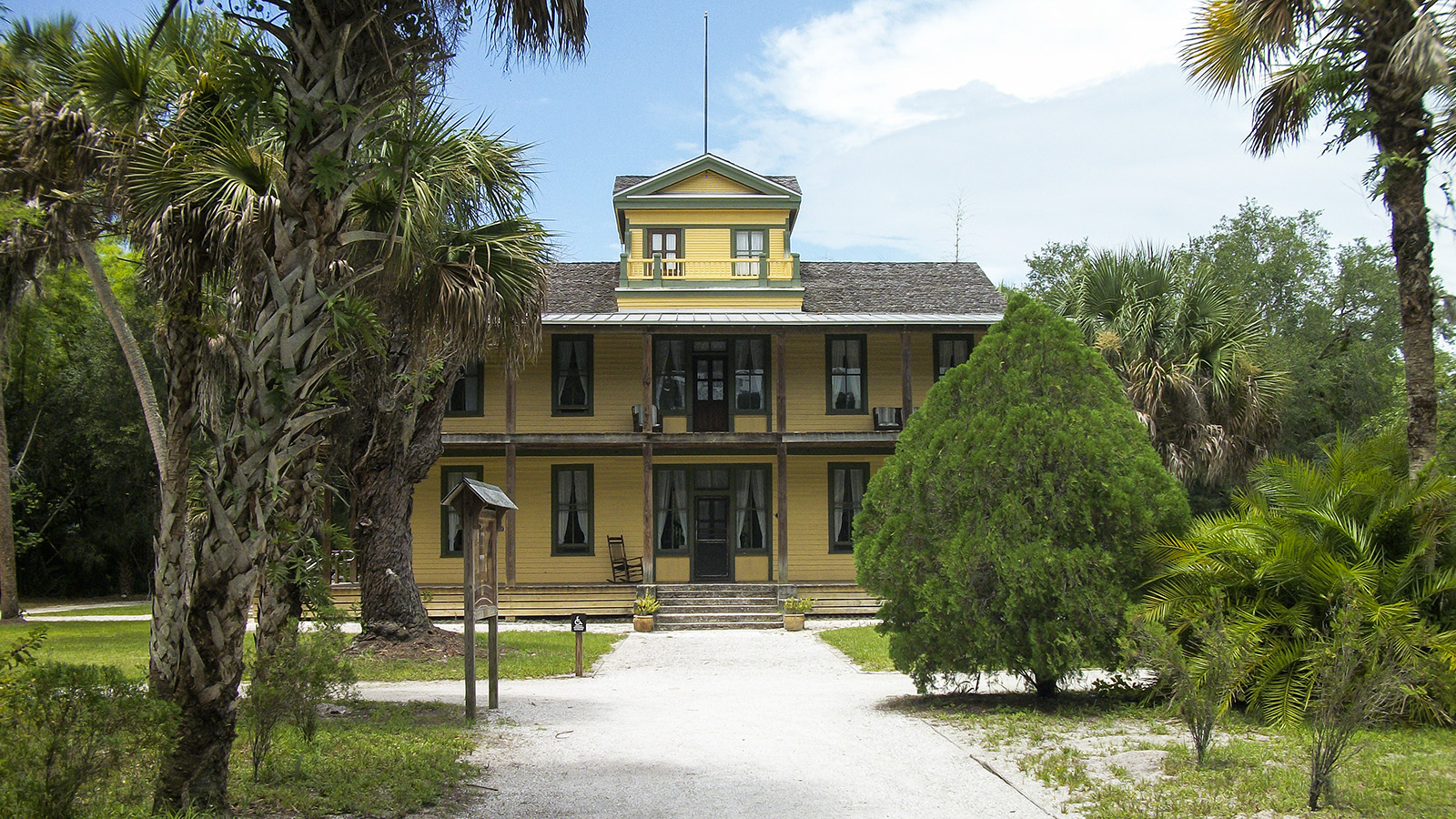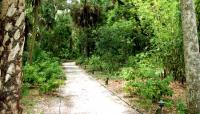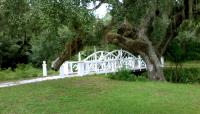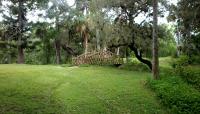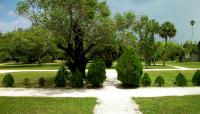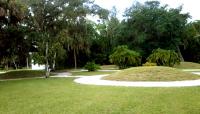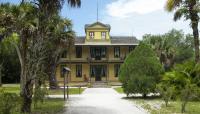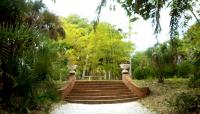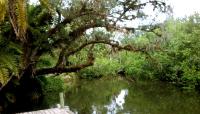Landscape Information
In 1894 Dr. Cyrus R. Teed started a utopian, communistic settlement after the Koreshanity system, on 300 acres south of the Estero River in the Florida frontier. The Koreshan Unity transformed the jungle-like landscape into a self-sustaining commune based on subsistence agriculture and light industry. Main access to the settlement was via the river; the boat landing, adorned with curving concrete stairs, an arc of arborvitae and stands of bamboo, was a natural amphitheater as well as a ceremonial entrance to the settlement.
The Koreshans landscaped their grounds between 1894 and 1908. A sunken garden created in a natural ravine was set with two rustic footbridges, while an orthogonal parterre comprised of earthen mounds provided a counterpoint to picturesque, crushed shell foot paths dotted with ornamental concrete urns. The main buildings, made from local timber, were arranged in a quadrangle surrounding formal lawns and shrub-lined paths. The Koreshans planted sub-tropical plants from around the world, including a Monkey Puzzle tree and African sausage trees which intrigued such celebrated visitors as Thomas Edison and botanist Henry Nehrling. Lilies, eucalyptus, jacaranda, and golden shower trees were interspersed with native azaleas, ferns, yucca, live oaks, palms, and mulberry trees. A tropical fruit orchard was built to the south.
Membership in the community began to dwindle, and in 1961 the property was deeded to the State of Florida as a public park. Today the park includes camping facilities, nature trails, and the vestiges of the historic Koreshan settlement. It was listed in the National Register of Historic Places in 1976.



